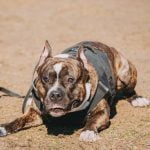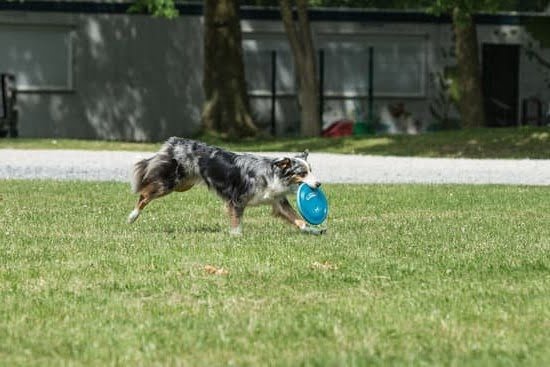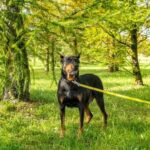The demand for well-trained attack dogs has been on the rise in recent years, as individuals and businesses seek reliable protection and security measures. However, the key to success in training a puppy to become an effective attack dog lies in starting the training process from a young age. Early training not only allows for better control and discipline but also establishes a foundation of obedience and socialization that is crucial for a well-rounded attack dog.
Training a puppy for attack dog purposes is a significant responsibility that requires careful assessment and planning. Each puppy’s temperament and suitability for attack dog training must be carefully evaluated, taking into consideration both breed characteristics and individual traits. Assessing signs of aggression, trainability, and adaptability will help determine if the puppy has the potential to excel in attack dog training.
Once the suitability of the puppy has been determined, establishing a foundation of basic obedience is essential. Teaching fundamental commands such as sit, stay, and come lays the groundwork for more advanced skills later in training. Techniques to reinforce proper behavior and discipline play a vital role in shaping the puppy’s understanding of boundaries and commands.
Proper socialization is another critical aspect of training an attack dog. Exposing the puppy to various environments, people, animals, and stimuli helps create a well-rounded dog capable of handling different situations confidently. Strategies to introduce the puppy to new experiences gradually while maintaining control are instrumental in building their social skills.
Assessing the Puppy’s Temperament and Suitability for Attack Dog Training
When it comes to training a puppy for attack dog purposes, assessing their temperament and suitability is crucial. Not every puppy is suitable for this type of specialized training, as it requires a specific set of characteristics and traits. By properly evaluating the breed and individual characteristics of the puppy, as well as identifying signs of aggression and trainability, you can determine whether your puppy has the potential to become an effective attack dog.
Evaluating the breed and individual characteristics
The first step in assessing a puppy’s suitability for attack dog training is to consider the breed characteristics. Certain breeds are more commonly used for protection work due to their innate instincts and physical attributes. Breeds such as German Shepherds, Belgian Malinois, Rottweilers, Doberman Pinschers, and Pit Bulls are often chosen for their natural protective instincts, intelligence, physical stamina, and agility. However, it’s important to remember that individual temperament can vary within a breed.
In addition to considering breed characteristics, assessing an individual puppy’s personality traits is equally important. Look for puppies that display confidence, alertness, fearlessness, curiosity, and a strong desire to please. These traits indicate that a puppy may have the right temperament for attack dog training. On the other hand, avoid puppies that show excessive shyness or fearfulness as these traits may hinder their ability to perform tasks effectively.
Identifying signs of aggression and trainability
While aggression should not be the primary quality sought in an attack dog candidate, it is essential to identify if a puppy displays appropriate levels of controlled aggression. Signs of healthy aggression include assertiveness when engaging in play or guarding behavior while still remaining responsive to commands from their handler.
Trainability is another critical factor to consider when assessing a puppy’s suitability for attack dog training. Look for puppies that are curious, quick to learn, and eager to please. They should respond well to positive reinforcement training methods and demonstrate a strong desire to work. Puppies that show resistance or difficulty in learning basic obedience commands may struggle with the more complex skills required for attack dog training.
In summary, assessing a puppy’s temperament and suitability for attack dog training involves evaluating both breed characteristics and individual personality traits. Look for confident and alert puppies with a strong desire to please, while avoiding those that display excessive shyness or fearfulness.
Additionally, identify signs of appropriate levels of controlled aggression and assess trainability by observing their responsiveness and eagerness to learn. By carefully assessing these aspects, you will be able to select a puppy with the potential to excel in attack dog training.
Establishing a Foundation
Training a puppy for attack dog purposes requires a solid foundation of basic obedience training. This foundation is essential for the puppy’s development and will serve as the building blocks for more advanced training in the future. In this section, we will explore the significance of teaching fundamental commands and techniques to reinforce proper behavior and discipline.
One of the first steps in establishing a foundation for basic obedience training is teaching the puppy essential commands such as sit, stay, and come. These commands are not only useful for everyday life but also play a crucial role in creating a well-trained attack dog.
The “sit” command, for example, helps establish control and discipline, while the “stay” command teaches the puppy to remain in one place until further instructions are given. The “come” command ensures that the puppy will return to its handler when called upon.
To reinforce proper behavior and discipline during basic obedience training, positive reinforcement techniques should be employed. Reward-based methods using treats or praise can be highly effective in encouraging desired behaviors. It is important to provide clear cues and rewards immediately after the puppy performs the desired behavior correctly. Conversely, negative reinforcement or punishment should never be used as it can damage the trust between handler and dog and result in fearful or aggressive behavior.
In addition to positive reinforcement, consistency is key when establishing a foundation for basic obedience training. Puppies thrive on routine and repetition, so it is important to set aside dedicated time each day for training sessions. Keep training sessions short but frequent to avoid overwhelming the puppy and ensure they remain engaged.
| Command | Description |
|---|---|
| Sit | The “sit” command teaches the puppy to sit down on its hind legs. |
| Stay | The “stay” command teaches the puppy to remain in one place until given further instructions. |
| Come | The “come” command encourages the puppy to return to its handler when called upon. |
By establishing a foundation of basic obedience training, puppy owners can start their journey towards successfully training an attack dog. This solid groundwork will form the basis for further advanced training techniques and ensure that the puppy develops into a disciplined and well-behaved dog capable of fulfilling future attack dog purposes.
Socialization
Socialization plays a crucial role in training a puppy for attack dog purposes. By exposing the puppy to different environments and stimuli, trainers can ensure that the dog is well-rounded and adaptable in various situations. This section will discuss the importance of socialization in attack dog training and provide strategies for introducing puppies to different people, animals, and environments.
The Role of Socialization
Socializing a puppy involves gradually exposing them to various experiences, such as meeting new people and animals, encountering different sounds and sights, and exploring unfamiliar environments. The goal is to help the puppy develop confidence, reduce fear and anxiety, and learn appropriate behavior in different situations. In the context of training an attack dog, socialization is essential for promoting controlled behavior when faced with potential threats.
A well-socialized attack dog will understand how to interact appropriately with both familiar individuals such as their handler or family members, as well as with strangers or potential attackers. It also helps prevent fear-based aggression towards innocent individuals or non-threatening situations. Therefore, it is crucial to start socializing the puppy from an early age to ensure they develop a solid foundation for future training.
Strategies for Socialization
To successfully socialize a puppy for attack dog training, trainers should carefully introduce them to various people, animals, and environments while providing positive experiences. Here are some strategies that can be used:
- Controlled meetings: Start by introducing the puppy to friendly and calm individuals in controlled settings. Gradually expose them to more diverse types of people – including different ages, genders, ethnicities – so they learn not to discriminate based on appearances.
- Puppy classes: Enroll the puppy in obedience classes or organized playgroups specifically designed for young dogs. This allows them to interact with other puppies while supervised by professionals who can monitor their reactions and intervene if necessary.
- Exposure to stimuli: Gradually introduce the puppy to a wide range of sounds, such as car horns, sirens, and household appliances. Additionally, expose them to various environments such as city streets, parks, and crowded areas to accustom them to different stimuli and help build their confidence.
- Positive reinforcement: Always ensure that socialization experiences are positive for the puppy. Reward them with treats or praise when they exhibit calm behavior and react appropriately in different situations. This reinforces positive associations and helps shape their responses in the future.
By focusing on socialization early on, trainers can establish a strong foundation for their puppy’s development as an attack dog. With thorough exposure to various environments and stimuli, the puppy will be better prepared to handle different situations with confidence and control.
Bite Development
Bite development is a crucial aspect of training a puppy for attack dog purposes. It involves teaching the puppy proper bite techniques and control to ensure their effectiveness as an attack dog without promoting aggression or harm towards humans unnecessarily. By focusing on controlled biting, trainers can shape the puppy into a reliable and disciplined attack dog.
To begin with, it is important to prioritize teaching the puppy bite inhibition. This involves training them to control the force of their bite and only exert enough pressure needed for the task at hand. Gradually reducing the pressure applied during bite training sessions can help them understand that improper biting is not acceptable. Positive reinforcement, such as treats or praise, can be used to reward the puppy when they exhibit controlled biting behavior.
Introducing bite sleeves and other training equipment is another integral part of bite development. These tools allow handlers to simulate real-life scenarios where the attack dog needs to apprehend an intruder or aggressor.
It helps direct the dog’s biting technique towards specific targets while reinforcing their self-control and response to commands. However, it is crucial to emphasize that these tools are solely used during training and should never be mistaken for toys or encouraged outside of designated training sessions.
Overall, bite development plays a significant role in shaping an attack dog’s capabilities while ensuring they still exhibit obedience and control. By focusing on controlled biting techniques through gradual pressure reduction and utilizing appropriate training equipment, trainers can guide puppies towards becoming proficient attack dogs without compromising their overall behavior or safety around humans in non-threatening situations.
Encouraging Protective Behavior
In order to train a puppy for attack dog purposes, it is crucial to teach them how to identify threats and become alert. This section will focus on techniques that can be used to encourage protective behavior in a puppy. By implementing these methods, owners can help their puppies develop the skills needed to recognize potential dangers and respond accordingly.
One effective technique in teaching a puppy to identify threats is through exposure to different situations and stimuli. Gradually introducing the puppy to various environments, people, and animals can help them become familiar with different scenarios they may encounter in real-life situations. This exposure should be done in a controlled and positive manner, ensuring the puppy feels safe and secure throughout the process.
To encourage protectiveness, it is important for owners to display subtle cues and body language that signal potential threats. Dogs are incredibly perceptive animals and often pick up on their owner’s emotions and reactions. By remaining calm yet observant in potentially threatening situations, owners can communicate a sense of vigilance to their puppies, encouraging them to stay alert as well.
Additionally, utilizing reward-based training methods can be highly effective in teaching a puppy to identify threats. When the puppy displays behaviors that indicate they have recognized a potential threat, such as growling or barking at unfamiliar individuals or objects, they should be praised and rewarded for their response. This positive reinforcement helps reinforce the association between these behaviors and identifying potential dangers.
Encouraging protective behavior in a puppy is an essential part of their training as an attack dog. By employing these techniques of exposing them to various situations, displaying subtle cues, and using reward-based training methods, owners can help their puppies develop the skills necessary for protecting themselves and others when faced with potential threats.
| Technique | Description |
|---|---|
| Exposure to different environments, people, and animals | Gradually introduce the puppy to various situations to make them familiar with potential threats. |
| Display subtle cues and body language | Remain calm yet observant in potentially threatening situations to communicate vigilance to the puppy. |
| Reward-based training methods | Praise and reward the puppy when they display behaviors that indicate they have recognized a potential threat. |
Advanced Obedience Training
Once your puppy has mastered the foundation training and has a solid understanding of basic obedience commands, it is time to take their skills to the next level. Advanced obedience training will further enhance their abilities as an attack dog and ensure they can perform commands accurately and reliably in various situations. This section will outline some techniques and strategies for advanced obedience training.
- Building on the Foundation: To start advanced obedience training, it is crucial to build upon the foundation commands that your puppy has already learned. This includes commands such as sit, stay, come, and heel. However, during advanced training, these commands should be executed with increased precision and speed. Introduce distractions gradually to challenge your puppy’s ability to maintain focus and follow commands amidst potential distractions.
- Expanding Repertoire of Commands: In addition to reinforcing existing commands, it is important to introduce new ones that will be valuable in attack dog situations. Some useful advanced commands include “drop it” (releasing an object from their mouth), “take it” (picking up an object on command), “search” (looking for hidden objects), and “watch” (maintaining eye contact with a specific target). These commands are beneficial for enhancing your dog’s overall obedience and agility.
- Advanced Techniques: Advanced obedience training involves using more complex techniques to improve your puppy’s skills. For example, you can use shaping exercises where you reward small steps towards achieving a desired behavior. This method allows your puppy to actively participate in problem-solving tasks and helps them understand complex behaviors.
- Continual Practice: Consistency is key when it comes to advanced obedience training. Regularly practicing the commands in different environments and scenarios will help reinforce their skills and ensure they can perform under varying conditions. Gradually increase the difficulty level of distractions or add new challenges once your puppy has mastered a particular command.
By taking your puppy’s skills to the next level through advanced obedience training, you are setting them up for success as an attack dog. Remember to be patient, consistent, and reward their progress along the way. Investing time and effort into this stage of training will pay off with a well-trained and reliable attack dog that can confidently carry out commands in any situation.
Practicing Aggression Control
When training a puppy to become an attack dog, it is crucial to teach them how to differentiate between friendly individuals and potential threats. The purpose of this section is to outline effective techniques for practicing aggression control and ensuring that the puppy’s aggression is solely directed at actual attackers.
One technique that can be utilized is controlled socialization. Exposing the puppy to a variety of people, both familiar and unfamiliar, will help them develop the ability to recognize different types of individuals. During these socialization exercises, it is important to reward the puppy for demonstrating appropriate behavior and remaining calm around friendly individuals while discouraging any signs of aggression. This can be achieved through positive reinforcement training techniques, such as treats or praise.
Another approach to teaching aggression control is desensitization training. This involves gradually exposing the puppy to stimuli that may trigger an aggressive response, such as loud noises or sudden movements. By introducing these stimuli in a controlled environment and rewarding the puppy for maintaining composure, they can learn to distinguish between harmless situations and genuine threats.
It is essential to remember that proper obedience training plays a vital role in aggression control. Teaching commands like “leave it” or “drop it” can help redirect the dog’s focus away from potential targets and enforce their understanding of what is acceptable behavior. Consistent practice of these commands in various scenarios will strengthen their impulse control and further reinforce their ability to distinguish friend from foe.
By consistently practicing these techniques with patience, consistency, and positive reinforcement, owners can help their puppies become well-rounded attack dogs who are capable of distinguishing between innocent strangers and actual attackers. Developing these skills not only enhances the safety of those around them but also ensures that the dog remains focused on its intended purpose while adhering to strict guidelines regarding when aggressive behavior is appropriate.
Maintaining Proper Health and Well-being
Proper health and well-being are essential for any dog, including those being trained for attack purposes. To ensure the puppy grows into a strong and agile attack dog, owners must pay close attention to their nutrition, exercise routines, and provide regular veterinary care.
Nutrition plays a crucial role in the physical development of a puppy. For attack dog training, it is important to feed them a balanced diet that meets their caloric needs. Consult with a veterinarian to create a nutrition plan tailored to the specific needs of an attack dog in training.
High-quality dog food that is rich in protein will help build muscle strength and provide energy for intense training sessions. Additionally, be mindful of the portion sizes to prevent overfeeding, which can lead to weight gain and potential health issues.
Regular exercise is vital for maintaining the overall fitness and mental stimulation of an attack dog in training. Engage in daily physical activities such as jogging, running, or playing fetch to keep the puppy active and burn off excess energy. Adequate exercise helps develop strong muscles and endurance needed for rigorous training sessions. Mental exercises like puzzle toys and obedience drills should also be included to keep the puppy mentally sharp.
Taking proper care of an attack dog’s health includes scheduling regular visits to the veterinarian. Puppies require vaccinations, deworming treatments, and routine check-ups to prevent common illnesses and maintain good overall health. A veterinarian can also address any underlying health issues early on before they escalate into more serious conditions.
Conclusion
In conclusion, training a puppy for attack dog purposes requires a comprehensive approach that encompasses various stages and techniques. Starting from a young age is crucial in order to establish a strong foundation of obedience and discipline. Assessing the puppy’s temperament and suitability for attack dog training is essential to ensure that they have the necessary traits and characteristics.
Creating a well-rounded attack dog involves socialization, exposing the puppy to different environments and stimuli. This helps them become adaptable and comfortable in various situations. Additionally, teaching controlled biting techniques rather than aggression is important in developing proper bite control.
Advanced obedience training is necessary to take the puppy’s skills to the next level, building upon the basic foundation commands. Practicing aggression control ensures that the puppy can distinguish between friend and foe, directing their aggression only towards actual threats.
It is vital to maintain proper health and well-being for an attack dog through nutrition, exercise, and regular veterinary care. A balanced diet promotes optimal physical and mental development, while regular exercise keeps them agile and alert.
Owning a well-trained attack dog comes with rewards and responsibilities. These dogs are capable of providing protection, but also require ongoing training and maintenance. For those considering embarking on this rewarding journey of training a puppy for attack dog purposes, it is important to understand the dedication required but also the immense satisfaction that comes with successfully raising a highly skilled canine companion.
Frequently Asked Questions
How do you train a puppy to be an attack dog?
Training a puppy to be an attack dog is not recommended for the average pet owner. The process of training a dog to become an attack dog requires extensive knowledge, experience, and specialized skills that should only be undertaken by professional trainers or experts in the field. These dogs undergo rigorous training that includes obedience commands, protection work, and often bite work.
It involves careful control and discipline to ensure their aggression is channeled appropriately. Attempting to train a puppy to be an attack dog without adequate expertise can be dangerous both for the handler and others.
How do I teach my dog to protect?
Teaching a dog to protect is different from training them to be an attack dog. The goal here is not about turning your pet into an aggressive animal but rather teaching them how to respond appropriately when faced with potential threats towards their owners or property. Focus on building a strong bond with your dog through positive reinforcement training methods, socialization, and obedience training.
Introduce them gradually to various situations such as unfamiliar people or loud noises and reward calm behavior. You can also enroll them in specialized protection classes led by professionals who can teach them to alert you when someone approaches or act as a deterrent through barking.
Can you train a dog to stop attacking?
Yes, it is possible to train a dog to stop attacking if they have displayed aggressive behavior. However, working with an aggressive dog requires patience, consistency, and professional guidance. Start by identifying the triggers or situations that provoke their aggression and try to avoid those whenever possible.
Consult with a professional trainer or animal behaviorist who can create a tailored plan based on your specific situation and help modify your dog’s behavior using positive reinforcement techniques like reward-based training methods. It is crucial never to resort to punishment or harsh techniques as they can further escalate aggression in dogs rather than resolve it. With proper guidance and commitment, many dogs can learn alternative behaviors and ultimately overcome their tendency towards attacking.

Welcome to the blog! I am a professional dog trainer and have been working with dogs for many years. In this blog, I will be discussing various topics related to dog training, including tips, tricks, and advice. I hope you find this information helpful and informative. Thanks for reading!





